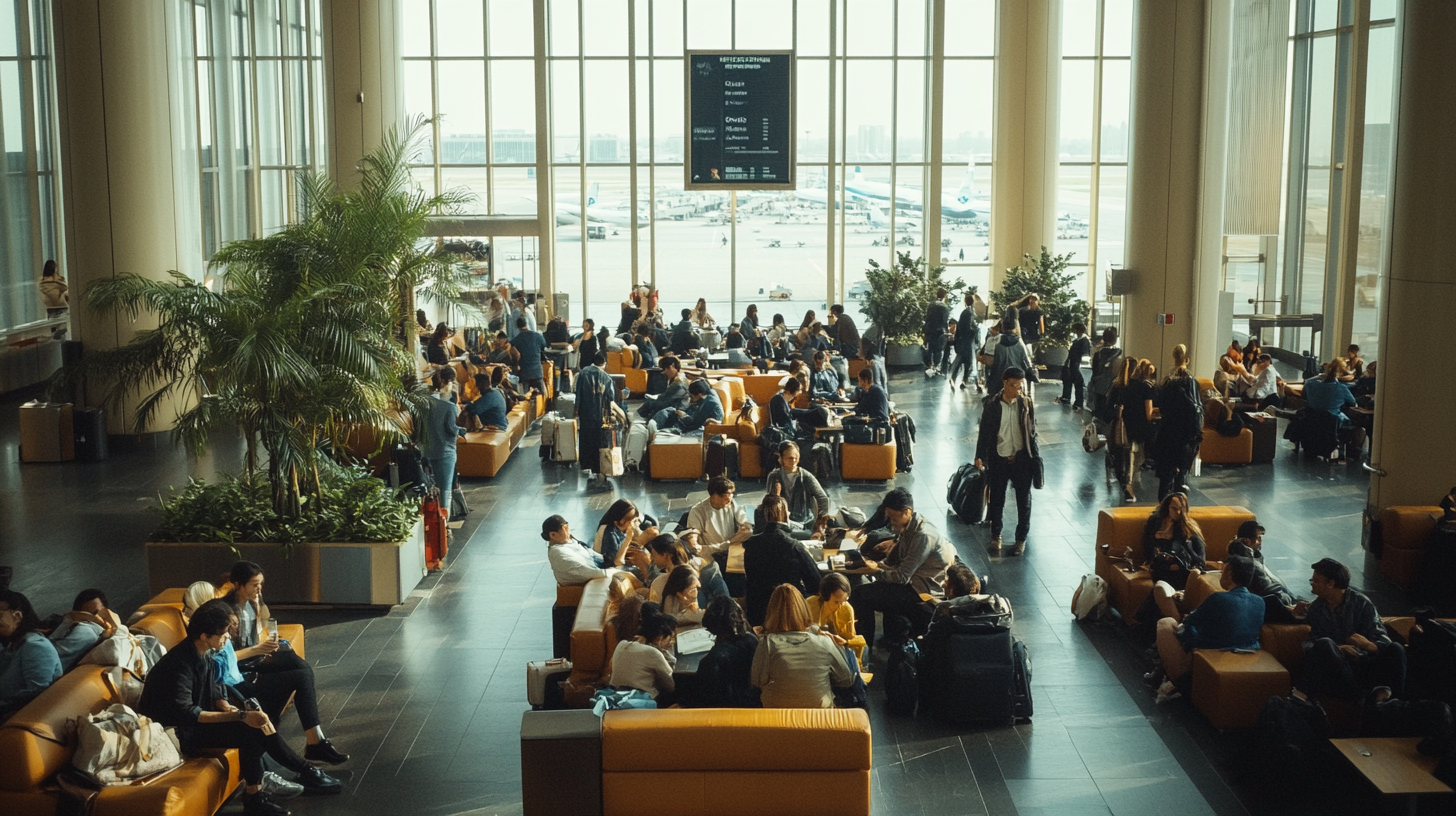From Boardroom to Boarding Gate: The Surging Business Travel Market

Overview: A Billion-Dollar Takeoff

I’ve always found it remarkable how quickly business travel has rebounded, and recent statistics align with what I’ve witnessed firsthand. Back in 2023, the global business travel market was estimated between roughly 999 billion and 1.37 trillion dollars. According to a 2024 report by the Global Business Travel Association, we could see this figure surge to nearly 3 trillion dollars by the mid-2030s, with annual growth rates hovering anywhere from 5% to 15%. The potential for continued expansion appears stronger than ever, especially given the renewed sense of urgency to make face-to-face connections in a world that has tried to go fully digital.
I’ve observed so many professionals like me hopping on planes and heading off to conferences or client meetings. Even though video calls helped maintain business continuity, there’s a unique value in shaking someone’s hand or having a side chat during a coffee break. These moments can translate into more meaningful professional relationships, underscoring why business travel still feels irreplaceable. Solo travelers represent more than half of all business trips, and I see more companies encouraging employees to take that step beyond the virtual world, fueling a vibrant, high-value market.
Key Drivers Fueling the Growth

One major catalyst propelling this wave of business travel is the unstoppable push toward globalization. I’ve noticed organizations in tech, finance, and even the arts securing cross-border partnerships like never before. Hybrid work models often require key personnel to converge on-site for significant milestones—such as product launches or leadership summits. A recent study suggests that 70% of corporate leaders prefer at least one in-person meeting per quarter to maintain the momentum of big initiatives.
Government infrastructure also plays a big role in making these journeys smoother, whether it’s new terminals opening at major airports or better public transportation connecting travelers to city centers. On top of that, advanced booking platforms and AI-powered tools have made trip planning far less intimidating. I’ve personally benefited from automated itineraries that sync seamlessly with my calendar, and I’ve found it reduces stress while maximizing efficiency. Startups and smaller businesses are capitalizing on these advances too, ensuring they can stretch travel budgets to build valuable international relationships.
Regional Highlights and Powerhouses

From my perspective, the Asia Pacific region stands out for its intense pace of innovation. Industry data shows Asia Pacific consistently capturing upwards of 37% of the global business travel market, with some estimates pushing closer to 43%. Powerful economies like China, Japan, and emerging Southeast Asian nations foster massive demand for flights, hotels, and meeting venues. When I visited Singapore for an aviation expo last year, it was evident how infrastructure investments—like Changi Airport‘s expansions—directly feed into business travel growth.
Meanwhile, North America maintains around 27% of the global share, fueled by robust corporate hubs in cities like New York, San Francisco, and Toronto. I’ve also seen considerable change in regions that once seemed off the beaten path: places like Eastern Europe and parts of Latin America are drawing more corporate traffic, thanks to improved visa processes and multi-lingual capabilities. It’s a global shift that emphasizes just how diverse the modern corporate travel ecosystem has become.
Challenges on the Horizon

Despite the optimism, I’ve encountered some clear headwinds. Macro-economic concerns can cause businesses to trim travel budgets, especially if profit margins tighten. According to industry data released in early 2025, companies are increasingly scrutinizing every travel expense. This can mean fewer people going on trips or adopting alternative meeting formats where possible. Video conferencing, while not a perfect substitute, remains a formidable rival in certain cost-sensitive scenarios.
Another factor is sustainability. I’ve noticed a growing shift toward carbon offset programs and greener travel policies, particularly among large enterprises that want to showcase environmental responsibility. There are also complicated political landscapes that can change at a moment’s notice, making certain routes or visas harder to obtain. Keeping up with these variations in regulations can be a hassle, but staying informed ensures compliance and helps avoid last-minute scrambles.
Top Picks in Corporate Travel Services

The service providers in this space are working overtime to keep up with fast-paced changes. I’ve had smooth experiences with well-known giants like American Express Global Business Travel and BCD Travel, both of which provide end-to-end solutions that can bundle flights, hotels, and even visa assistance under one seamless system. In my own planning, I’ve benefited from travel management dashboards that automatically track expenses and push notifications if anything changes with my itinerary.
Smaller yet innovative platforms also deserve a shout-out, especially those that tailor their offerings to specific industries. For instance, some focus heavily on risk management, highlighting real-time security updates for travelers heading to less familiar destinations. The main takeaway is that competition helps create specialized tools that address a variety of needs, from schedule optimization for frequent flyers to cost-saving measures for rapidly expanding startups. In 2025’s ever-evolving landscape, finding the right travel partner can significantly enhance productivity and peace of mind.
Final Thoughts

Looking at the layers that feed into this surge—globalization, hybrid work, innovative infrastructure, and cutting-edge technology—it all points to a thriving future for corporate travel. I’ve come to appreciate how each trip can deliver not just business outcomes, but also broader cultural awareness, new personal connections, and unexpected opportunities. The data is clear that we’re on the path to multi-trillion-dollar growth over the next decade, and the more we collectively refine our travel habits, the more we stand to gain.
At the same time, transparency about challenges, whether financial, environmental, or political, remains critical. Organizations that balance these obstacles by devising travel policies that are cost-conscious, sustainable, and aligned with strategic goals are far more likely to see long-term success. For me, the excitement lies in watching how these journeys can shape businesses, industries, and local communities—and all in an increasingly interactive and tech-driven environment.
Amelia Yeaher’s Take
The bold spirit of innovation in business travel resonates deeply with my own passion for merging technology, research, and the thrill of crossing borders. We may live in a world where digital realms are becoming more immersive by the day, yet there’s something electric about stepping off a plane ready to shake a hand and share a story.
Staying curious and open to new methods—using AI-driven booking tools or discovering emerging markets—often leads to surprises that spark creativity and success. I believe the future of corporate travel is as much about possibility as it is about deals and deadlines.
Explore more travel insights at Seat5A.






